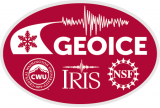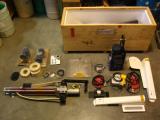Acknowledgment
In any publications or reports resulting from the use of these instruments, please include a statement in the acknowledgment section. You are also encouraged to acknowledge NSF and IRIS in any contacts with the news media or in general articles.
How to Cite IRIS in Your Publication
PASSCAL Program Citation
Aster, R., Beaudoin, B., Hole, J., Fouch, M., Fowler, J., and James, D., 2005, IRIS Seismology Program Marks 20 Years of Discovery, Eos Trans. AGU, 86(17), p. 171-172.
Logos
PASSCAL Logos








